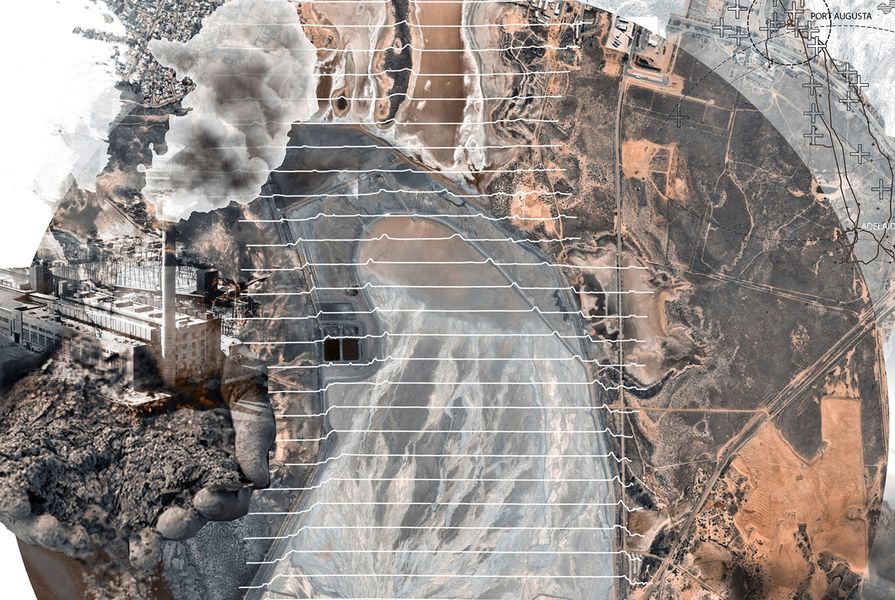The Australian Institute of Landscape Architects have announced the winners of a competition speculating on the future of Australia’s varied landscapes.
Run as part of the Australian Institute of Landcape Architects 2021 Festival of Landscape Architecture, the Future Landscapes ideas competition invited landscape architecture and design students and recent gradutes to consider how existing Australian streets, parks and public open spaces might be framed as places of spectacle, and how landscapes might be built out of different forms of collapse.
The winning project, Silicon Gulf: Transition from contaminated post-industrial land to regenerative data centre park, by Zhuocheng (Jackie) Gu, explores possibilities for a renewable energy future for Port Augusta, South Australia that grapples with the toxic legacy of the site’s history of coal-based energy production.
Silicon Gulf: Transition from contaminated post-industrial land to regenerative data centre park by Zhuocheng (Jackie) Gu
Gu’s project was developed as part of the “Solar Nexus” graduating studio within the landscape architecture masters program at the University of Adelaide. Scott Hawken, a senior lecturer at the School of Architecture and Built Environment at the University of Adelaide, and graduating studio leader said Gu’s work aimed to capture the complexity of the transition to renewable energy in Australia.
“There is both a bright side and a dark side to the renewables transition, with a whole new set of social and environmental challenges to contend with,” he said.
“The [Solar Nexus] studio encouraged students to engage with the sustainable transitions currently taking place in the arid regional town of Port Augusta, which is undergoing a remarkable transformation from a landscape of fossil fuel powered electricity production to a renewables powerhouse.”
Treatment of Anosmia by Wenxuan Zhang, Xiaohan Wang and Zhuoer Tang
The jury noted the entry for its evocative graphic style, clear narrative and resistance to conforming with the idea of a “green” spectacle.
“Silicon Gulf [introduces the existing landscape conditions of Northern Power Station Ash dam] with ingenious collage techniques that ground the proposal, with the location map haunting the image. The spectacle graphic consciously folds back into itself and expresses an inventive future design, while collapse is presented not as an opposition to spectacle, but a buoyant and hopeful alternative. The ‘collapse state’ also indicates a form of harmony between ecological processes and technological advances can emerge without large scale economical investment.”
Reviving Melbourne’s Heart by Qian Li, Jiayu Qiao and Yuye Zheng
The jury also awarded three runner-ups in the competition: Treatment of Anosmia by Wenxuan Zhang, Xiaohan Wang and Zhuoer Tang; Sandstock Crescent by Harry Lawson, Rosalie Brooker and Georgia Hopkins; and Reviving Melbourne’s Heart by Qian Li, Jiayu Qiao and Yuye Zheng.
“Spectacle and collapse are an odd couple. And yet there may be interesting ways of addressing our future if we see of the spectacle in synch with our downfall, and our collapse as making good outcomes. The [Future Landscapes] competition showed this potential: and the winning schemes all ask us to consider not just what these ideas mean, but what they mean together,” said University of Technology Sydney professor and competition juror, Martin Bryant.
The Future Landscapes competition jury comprised Maria Ignatieva (University of Western Australia), Martin Bryant (University of Technology Sydney); and Emily Wong (Landscape Architecture Australia).
To view the competition winner and runners-up in full, go here.



















